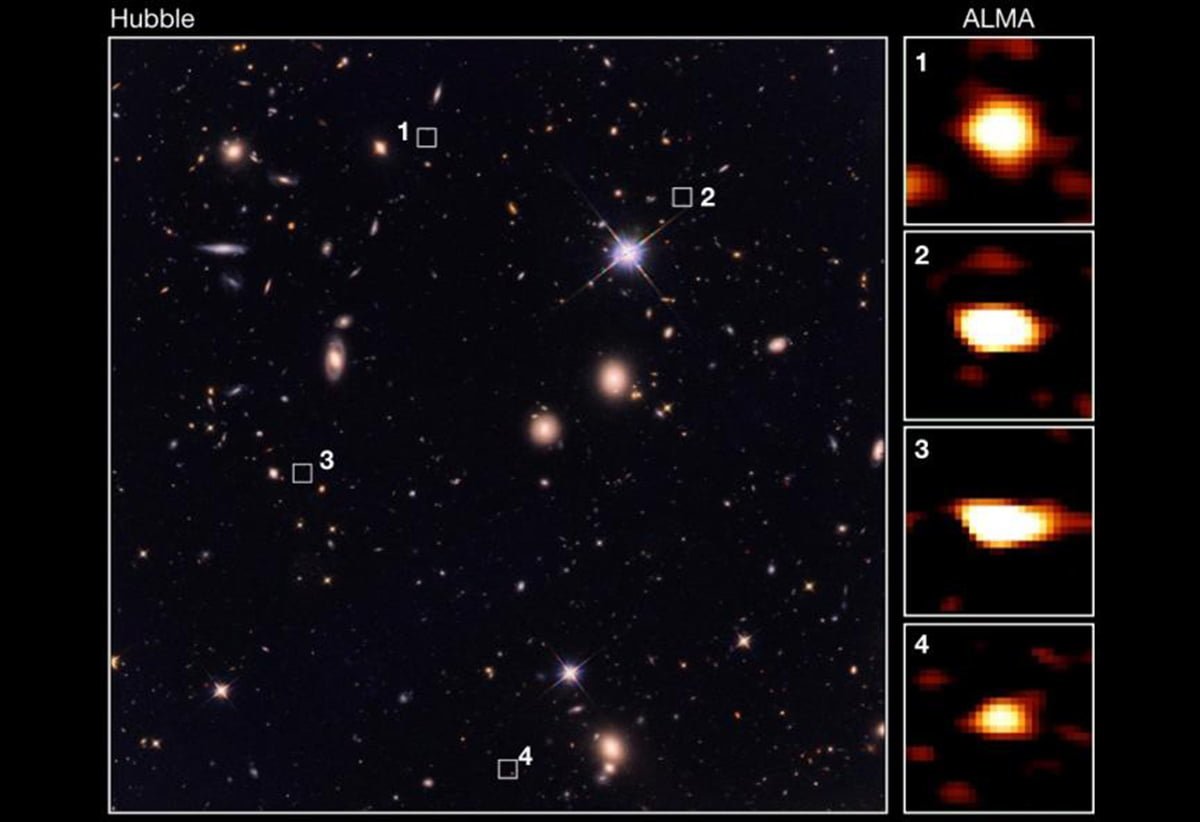Using combined astronomical observatories, a group of scientists have uncovered hidden massive ancient galaxies in deep space. If these types of galaxies prove to be abundant in space, it could defy the currently-approved models which have helped us understand the universe. According to a study describing them, these galaxies are interconnected with supermassive black holes and could help scientists have a better understanding of dark matter.
Scientists from the Institute of Astronomy at the University of Tokyo wanted to discover the galaxies that they, for a long time, believed to exist, and while the Hubble Space Telescope is responsible for the vast majority of stellar discoveries, the massive ancient galaxies remained invisible. Instead, the team used newer generations of observatories which helped see them. Their findings were published in the journal Nature.
“This is the first time that such a large population of massive galaxies was confirmed during the first 2 billion years of the 13.7-billion-year life of the universe. These were previously invisible to us,” said researcher Tao Wang in a statement. “This finding contravenes current models for that period of cosmic evolution and will help to add some details, which have been missing until now.”
“The light from these galaxies is very faint with long wavelengths invisible to our eyes and undetectable by Hubble,” said Professor Kotaro Kohno. “So we turned to the Atacama Large Millimeter/submillimeter Array (ALMA), which is ideal for viewing these kinds of things. I have a long history with that facility and so knew it would deliver good results.”
The massive ancient galaxies were the largest during the early universe’s phases, but their light is not sufficiently strong to be detected from Earth. The light stretches as it travels through space, so visible light becomes longer, eventually turning into infrared. This stretching helps scientists calculate the distance between Earth and objects far away.
“It was tough to convince our peers these galaxies were as old as we suspected them to be. Our initial suspicions about their existence came from the Spitzer Space Telescope’s infrared data,” continued Wang. “But ALMA has sharp eyes and revealed details at submillimeter wavelengths, the best wavelength to peer through dust present in the early universe. Even so, it took further data from the imaginatively named Very Large Telescope in Chile to really prove we were seeing ancient massive galaxies where none had been seen before.”
Another reason why these galaxies are appearing weak is because there are larger galaxies in the present day covered in dust, which prevents the light from smaller galaxies to reach the Earth. The 39 galaxies that were discovered are different compared to the Milky Way.
It’s also interesting to note that if our solar system resided in another galaxy, looking up in the clear skies would show a different pattern than the one we’re used to seeing when we look up at the Milky Way.
“For one thing, the night sky would appear far more majestic. The greater density of stars means there would be many more stars close by appearing larger and brighter,” explained Wang. “But conversely, the large amount of dust means farther-away stars would be far less visible, so the background to these bright close stars might be a vast dark void.”





